Notable
Built Environment Award
Core77 Design Awards 2015
SAMURAI Japanese Armor from the Ann and Gabriel Barbier-Mueller Collection
wHY makes exhibits with an unforgettable presence. For the current Samurai exhibit at LACMA, wHY wasted no time in thrusting viewers into the excitement of the material. After rounding a corner to enter the gallery, visitors find themselves mere feet from a trident formation of Samurai in full regalia astride armored horses in full gallop, back-lit by a blood-red sky. This experience immediately gets the blood circulating and heightens visitors' senses for the bounty of material that follows. 140 small and large objects are arranged to create an immersive experience that allows visitors to explore the intricate beauty and complex cultural history of the pieces.
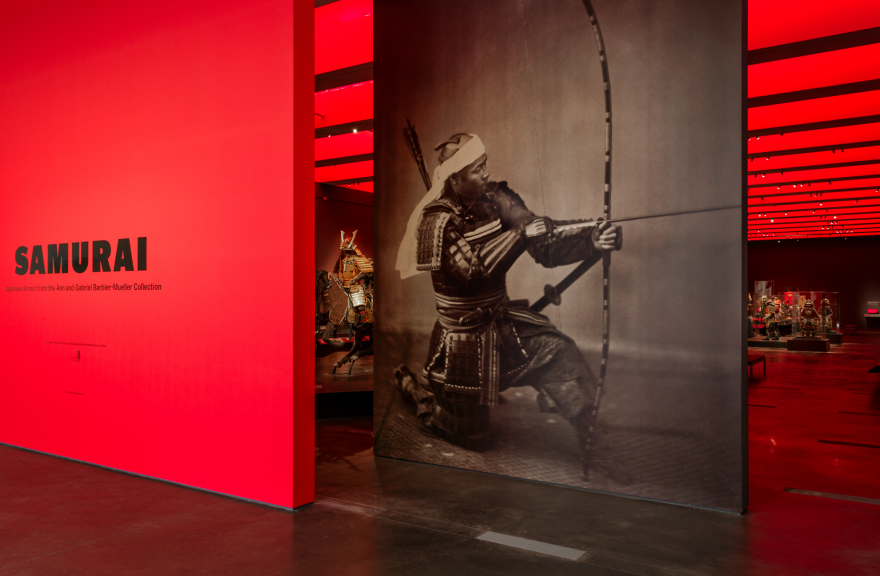
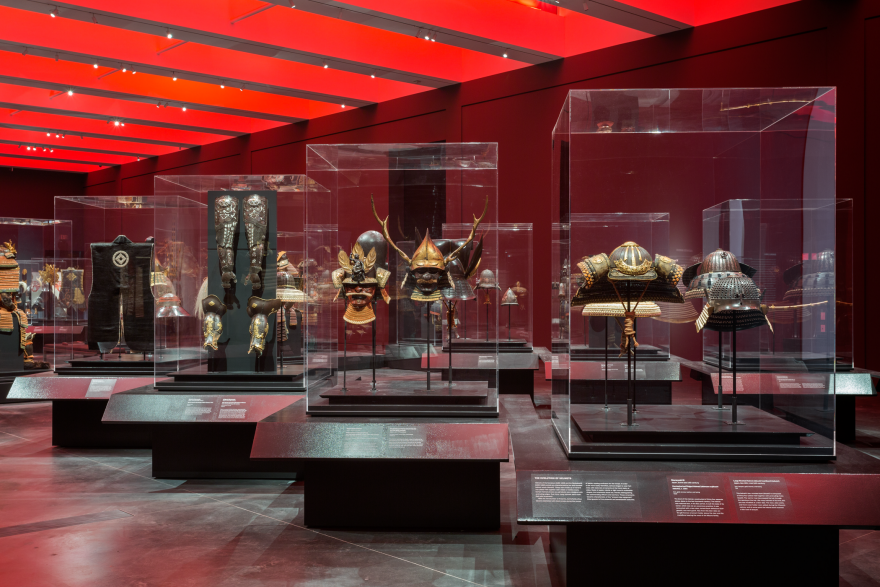
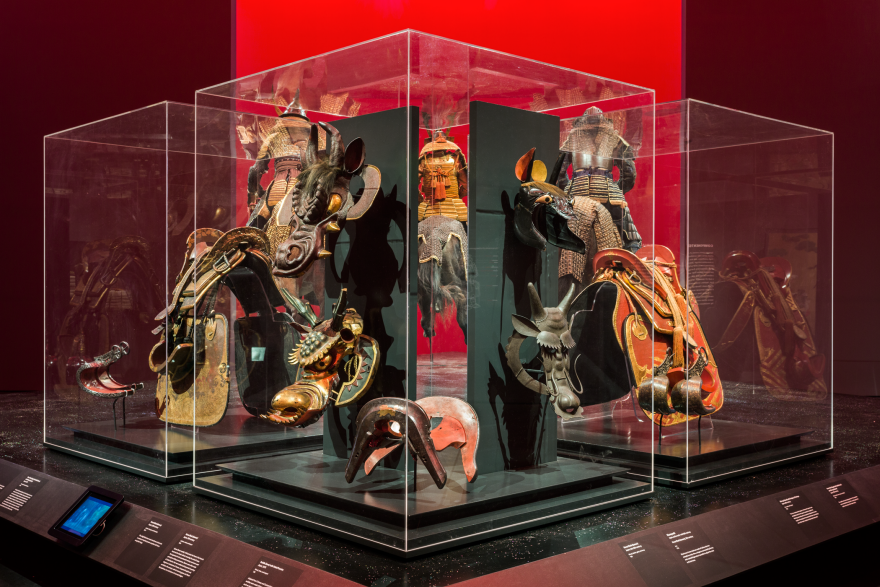
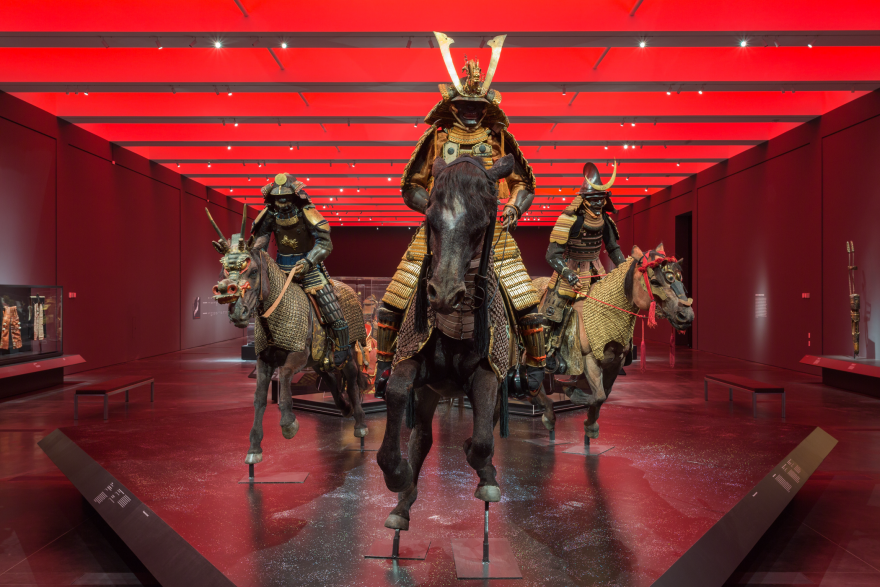
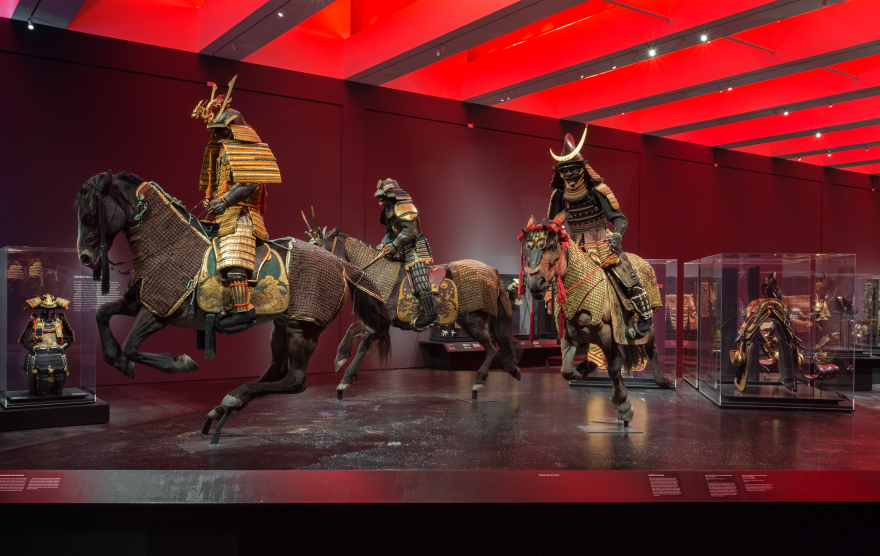
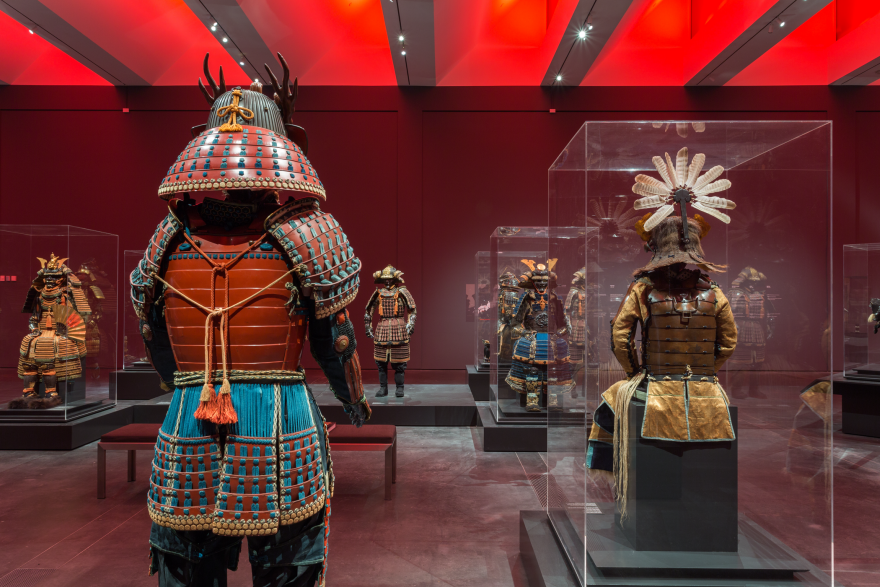

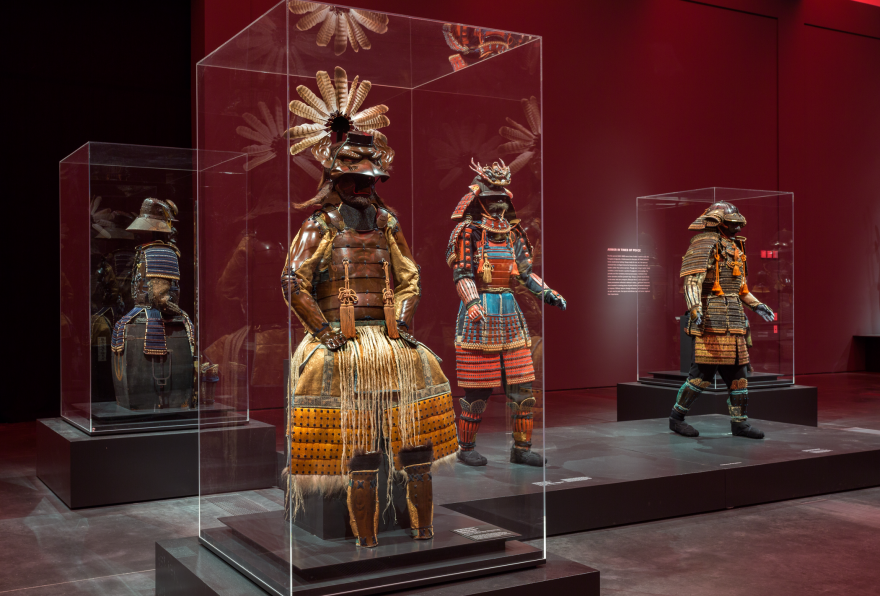
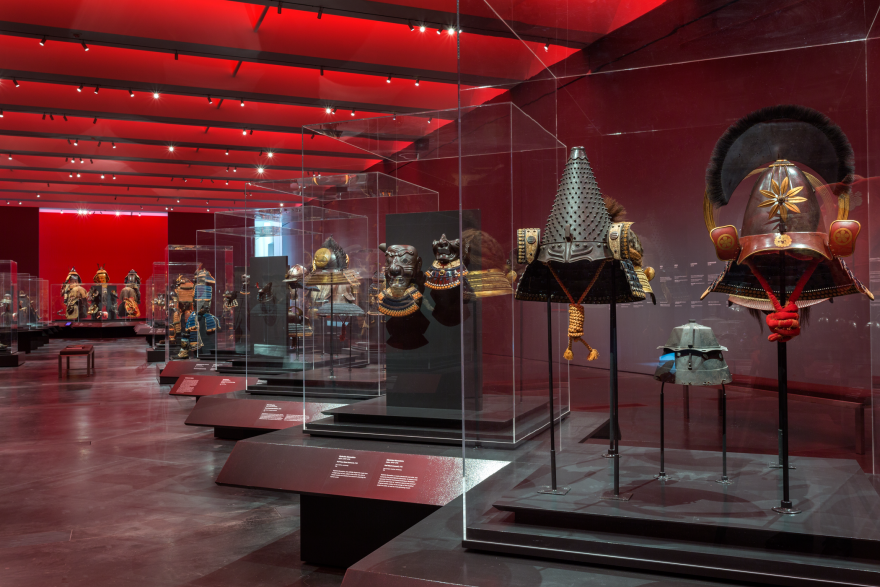

The Ann and Gabriel Barbier-Mueller Collection is was one of the most complete and complex collections of samurai armor ever to travel the US. wHY designed the installation of the show's final stop at LACMA's Resnick Pavilion. After an initial introduction to the material by curatorial staff, wHY immediately determined the goal for this exhibit was going to be using design to bring the collection to life for visitors.
This would be no small task. The challenge of doing justice to over 140 small and intricately detailed light sensitive objects - while keeping visitors engaged -- was significant. The design team outlined primary goals which would guide a design strategy:
• maintain the authenticity of the collection
• bring visitors as close to the material as possible from every angle
• create an immersive experience accommodating multiple storylines
• highlight the beauty of the objects to tell the history
Our design process began by joining LACMA's Asian Art Curator, Rob Singer, on a careful study into the background of the work to be exhibited. Through a series of workshops, hands-on exploration of related material, and general discussion, we explored the evolution of the Samurai culture and the corresponding development of its material embodiment. The correlation of these two areas of focus as they related to the collection would turn out to yield the primary organizing structure for the exhibit of this very complex collection of many small objects: a procession of samurai, progressing from heightened energy to peace, united in ceremony and pageantry.
Using Light to Re-imagine an Existing Space – and Tell a Story
Perhaps the most defining characteristic of the exhibition strategy is the light. The existing space is flooded with north light through a continuous band of skylights. This created great complexity when designing for a collection of many small objects that are extremely sensitive to light (most of the collection could be exposed to no more than 5 foot candles). wHY turned to the subject matter for a solution, keeping the space's association with light but transforming it to respond specifically to the collection by covering the openings and placing red gels over the lights. The dramatic result not only heightens senses, but references the collection's violent origins and Japan's connection to the symbolic red rising sun. The iconic color will also serve to link the Samurai show to a concurrent show of Japanese swords across the LACMA campus.
Organizing a Collection of Small Objects into a Powerful Engaging Experience
wHY worked with curatorial staff to use the concept of a procession as a curatorial idea to organize the different groupings within the collection. While the procession loosely referenced a historical timeline, it also layered in thinking about how the objects could best be presented and experienced by the audience as visual and narrative. Sections of the display include a deconstruction of the armor and the rare presentation of an extensive collection of artifacts from a single clan (the Mori Clan).
The procession is experienced upon entry to the exhibit in a rather startling way: visitors round a corner to find themselves face to face with a trio of samurai astride charging horses. In order to further immerse the visitor in the experience, the decision was made to open the procession down the middle so that the visitor could weave in and out of it, exploring all sides of the objects on display.
Discovering Innovation through Collaboration and Experimentation
The procession format enabled the collection to be appreciated at a distance, but it also needed to invite – and stand up to – close inspection. wHY worked extensively and early with museum curatorial staff to determine optimum viewing angles and lighting. Several discoveries along the way led to corrective measures that in turn led to exciting discoveries. For instance, the initial design for the helmet displays was to be three tiers high. However, mock-ups confirmed that two would be better, creating a greater demand for floor space. In response, the team explored turning the display cases 45 degrees to one another, which not only enabled increased density, but created a more immersive experience. Standing at viewing distance from the objects, visitors are within the perceived line of the display cases, heightening the experience of being immersed in the display.
Using Interactive Media to Expand on the Story
Throughout the exhibit, interactive displays complement and enhance the story told by the materials. Near the grouping of deconstructed armor, an interactive video shows a Samurai suiting up for battle. At a quiver of arrows intended for use on horseback, visitors can watch a reenactment of a samurai on horseback, drawing arrows from a similar quiver to shoot at targets - enabling the visitor to connect the quiver with the suited horses nearby. Other displays provide insight into the complex making of the various objects on display, belying their elegant simplicity and fostering greater appreciation.
The public response to the exhibit speaks to its value: not only was the show very well attended, but importantly it created a highly engaged space where on any given day, multiple generations interacted with each other and troops of school wide-eyed school children. Questions were asked and answered, hypothesis put forward, and imagination sparked. Adults frequently returned with families of friends, encouraged visits by their schools. Visitors left energized to explore other collections within LACMA, and the exhibit served as a magnet to many who were visiting the museum for the first time.
the atmosphere does incredible justice to the subject matter